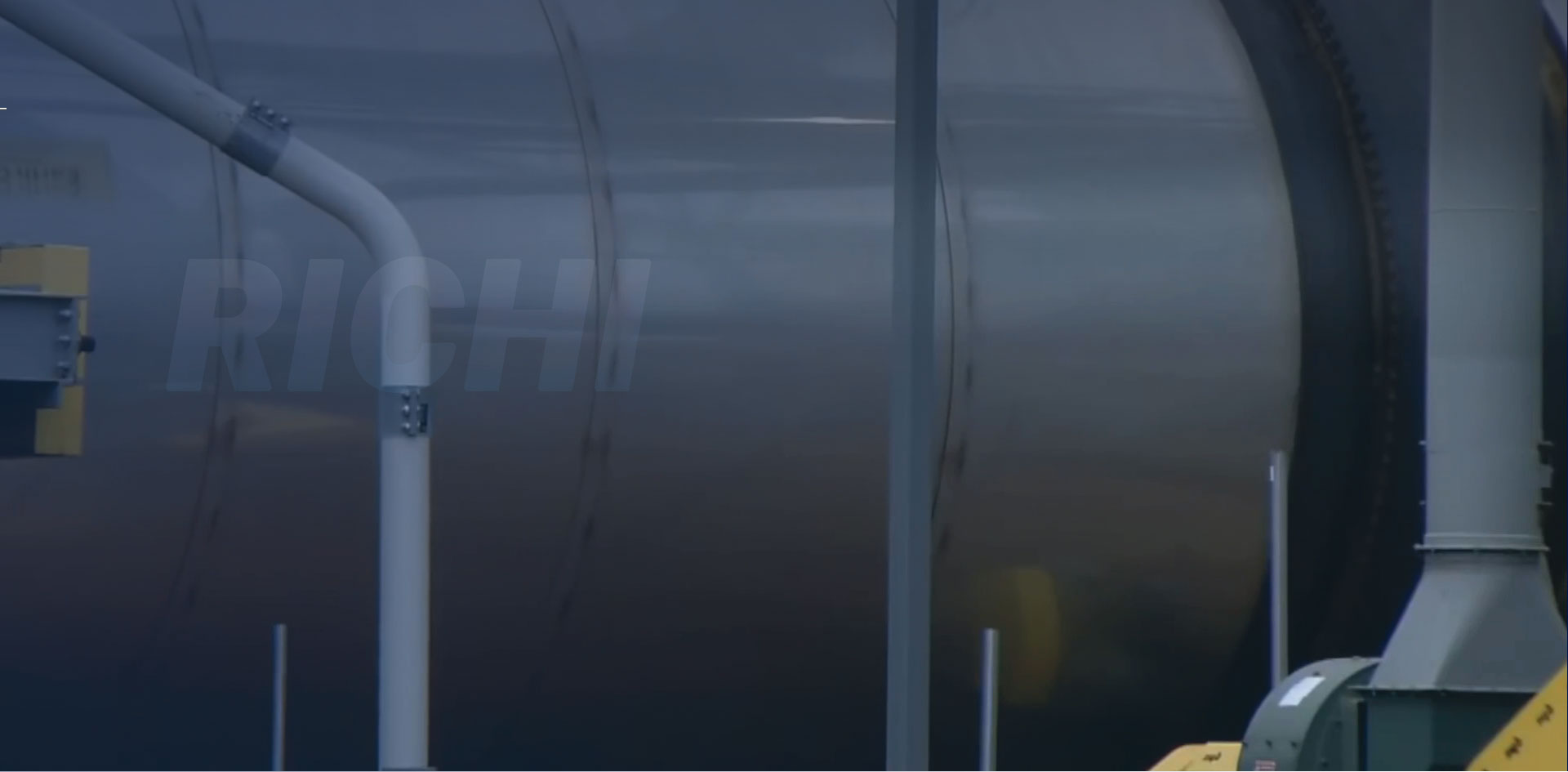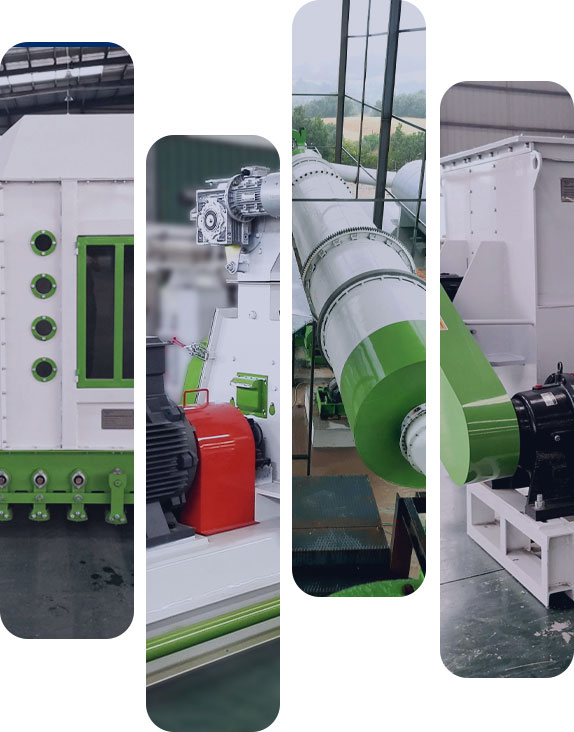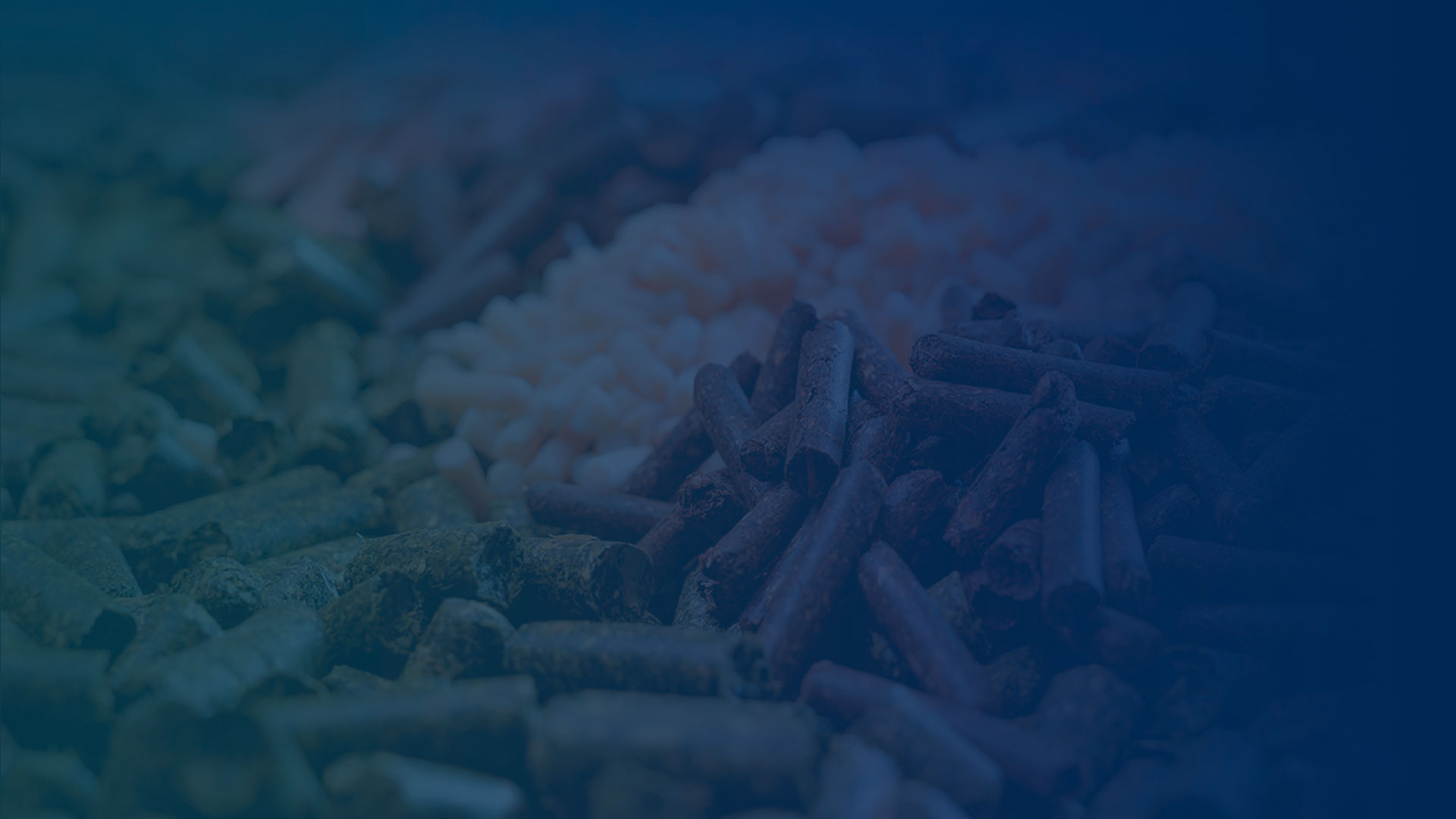
Efficient raw material handling, a prerequisite for excellent pellet production
Learn More
For animal feed production, especially for modern large-scale feed pellet production line, the cleaning of raw materials is not only to ensure the quality of the final feed, but also more importantly, to cut off the impurities that affect the pellet production equipment directly from the source, to protect the normal and safe operation of each production equipment.
Learn MoreLogs or wooden pallets, etc. that are intended for wood pellet production and whose dimensions are relatively large, usually need to be chipped to prepare them for subsequent stages. These machines ensure a seamless start-up of the production line and optimize material preparation for increased productivity.
Learn More

As long as you are ready to set up a feed pellet production line or biomass pellet production line, the following equipment will be your first choice for crushing raw materials. Of course, for materials with different properties and shapes and sizes, it is still recommended that you contact us to discuss detailed solutions and equipment configurations.
Contact UsExcessive moisture will result in poor pellet production quality and reduced pelletizing efficiency. Raw materials with 10-15% moisture content not only improves pelletizing efficiency, but also helps prevent clogging and extends equipment life. It also significantly improves pellet burning efficiency, storage stability and overall durability.
Learn More
Mixing equipment in animal feed production ensures even distribution of nutrients for consistent feed quality, which promotes livestock growth and health. Additionally, mixing allows feed formulations to be customized for different animal species, improving the overall quality and performance of the feed.
Contact Us
Henan RICHI Machinery Co., Ltd
You can reach us for all your questions, opinions and suggestions.
Contact UsRemoves impurities like stones, dust, and metals to prevent equipment damage.
Reduces material size to ensure uniformity and improve pellet formation.
Lowers moisture content to optimal levels, improving pellet density and quality.
Ensures an even distribution of nutrients or biomass materials for consistent pellet production.


What kind of pelletizing plant do you want to build?
How many tons per hour about this plant you want to build?
Where is the project going to be built?
When do you plan to start the operation?
Raw material processing is the initial and essential stage in pellet production, where raw materials are prepared to meet the specific requirements of the pelletizing process. This step ensures that the materials are suitable for efficient pellet formation and high-quality output. Below are the key components of raw material processing:
In a word, raw material processing lays the foundation for successful ball production by optimizing the physical and chemical properties of raw materials.
Crushing plays a vital role in enhancing production by improving material consistency, boosting the efficiency of downstream processes, and ensuring high-quality end products. This not only increases throughput but also reduces operational costs and waste.
Drying is a crucial step in the feed or biomass production process because it ensures the raw materials have the optimal moisture content for efficient processing and high-quality output. Excess moisture can lead to poor pellet formation, reduced durability, and increased risk of mold or spoilage during storage. Additionally, high-moisture materials can cause blockages and excessive wear on machinery, lowering operational efficiency. By reducing moisture to the appropriate levels, drying not only enhances pellet quality and longevity but also minimizes energy consumption and maintenance costs, ensuring a smoother and more cost-effective production process.
The ideal moisture content for pelletizing typically ranges between 10-15%, depending on the type of raw material being used. This moisture level ensures that the material has enough flexibility to bind properly under the high pressure and temperature in the pellet mill, resulting in durable, well-formed pellets. If the moisture content is too low, the material may not compress adequately, leading to brittle pellets. Conversely, excessive moisture can cause the pellets to be soft, crumbly, or even clog the machine. Maintaining the optimal moisture balance is crucial for efficient pellet production and high-quality output.
Mixing plays a crucial role in raw material processing by ensuring the uniform distribution of ingredients, which is essential for producing consistent and high-quality products. In feed production, mixing combines various raw materials like grains, proteins, vitamins, and minerals to create a balanced and homogeneous mixture. This uniformity ensures that every pellet or portion of feed contains the correct nutrient ratio, promoting optimal animal health and growth. Additionally, proper mixing prevents ingredient segregation and enhances the efficiency of downstream processes like pelletizing, drying, or extrusion, ultimately improving overall production efficiency and product quality.
Yes, unprocessed raw materials can significantly affect pellet quality. Raw materials that are not properly prepared—such as those with inconsistent particle sizes, high moisture content, or impurities like stones or metal—can lead to uneven pellet formation, poor binding, and reduced durability. Excess moisture may result in soft, crumbly pellets, while overly dry materials can produce brittle, weak pellets. Additionally, impurities can cause blockages and damage to the pellet mill, further compromising production efficiency. Proper pre-processing, including cleaning, drying, and grinding, is essential to ensure uniform, high-quality pellets.
If raw materials are too wet, it can lead to several problems in the pellet production process. Excess moisture makes the material clump together, which can clog the pellet mill's die and reduce production efficiency. The resulting pellets may also be soft, crumbly, and unable to maintain their shape, leading to poor quality and higher rejection rates. Additionally, wet materials increase the drying time and energy consumption, raising operational costs. Excess moisture in finished pellets can also promote mold growth during storage, reducing their shelf life and usability.
On the other hand, if the raw materials are too dry, they may not bind properly during pelletizing, resulting in brittle pellets that break apart easily. Dry materials also create excessive friction within the pellet mill, putting strain on the machinery and potentially causing overheating or mechanical failure. Furthermore, overly dry pellets produce more dust, which can pose safety hazards and reduce the quality of the product. Proper moisture management is crucial to ensure efficient production, maintain equipment longevity, and produce durable, high-quality pellets.
Raw material processing is a critical step in preparing ingredients for feed production. Below is a list of essential equipment commonly used:
In addition to a single shrimp feed granulator or shrimp feed extruder, we have a complete shrimp feed production line and can provide turnkey shrimp feed production engineering. We can provide the main equipment required for the entire shrimp feed production project, such as crushers, granulators, extruders, as well as some auxiliary equipment, such as conveying equipment, dust removal equipment, etc. As for the price of the entire shrimp feed production line, I need to first understand your specific needs, and then have our engineering designer customize a production plan for you. After the shrimp feed production plan is confirmed, we can calculate the price for you. To learn more about the prices of shrimp feed production equipment, please contact us immediately as we have a detailed price list.
If you need further information, please contact us

Note: Pellet production is a continuous and complex process, requiring many equipment to complete the production from raw materials to finished pellets. Therefore, it is suitable for commercial projects but not for personal use.

RICHI stick to the service principle is: We are focusing on your future, your future is our future!
© HENAN RICHI MACHINERY CO., LTD 1995-2025
Product Line-Up / Privacy Policy